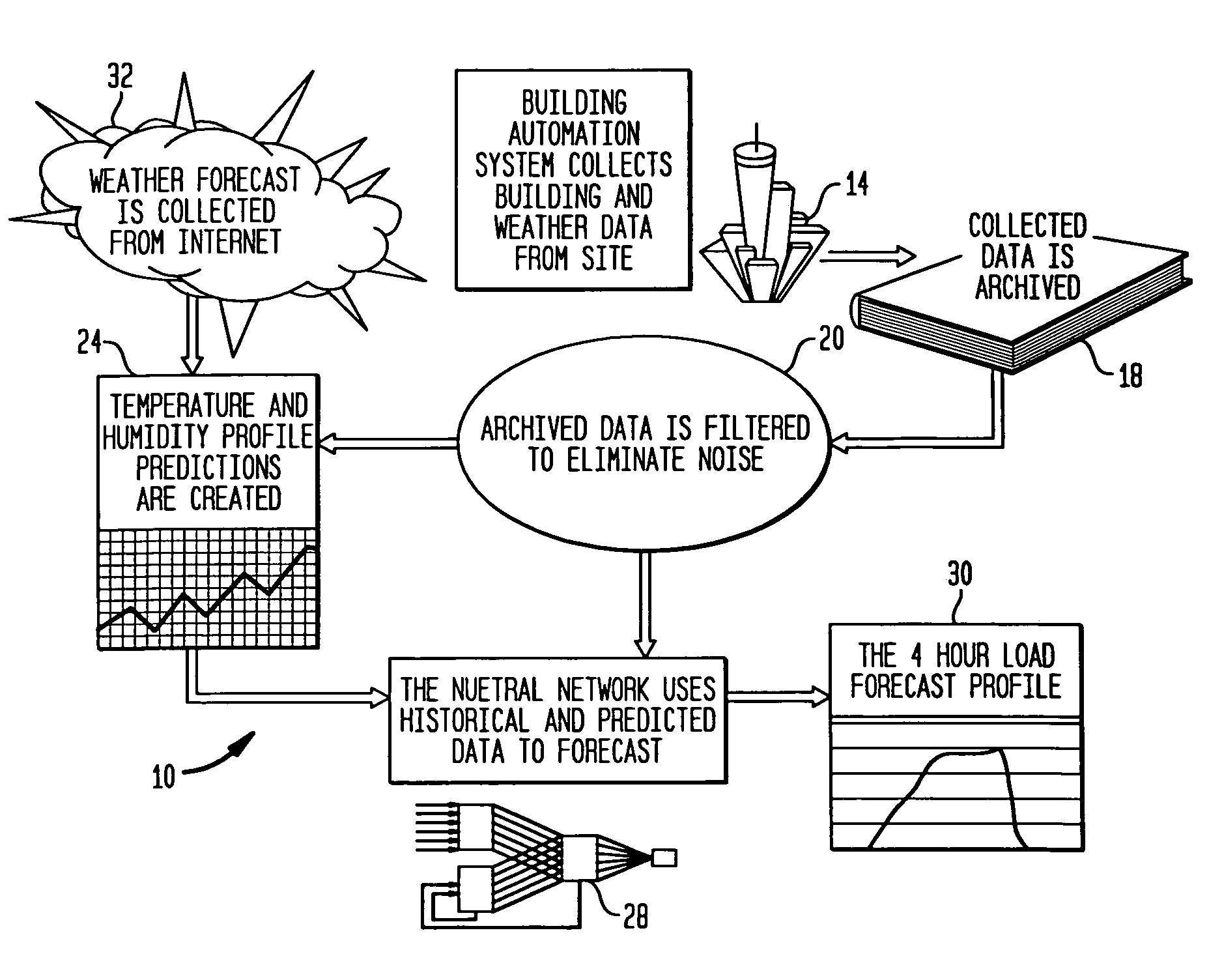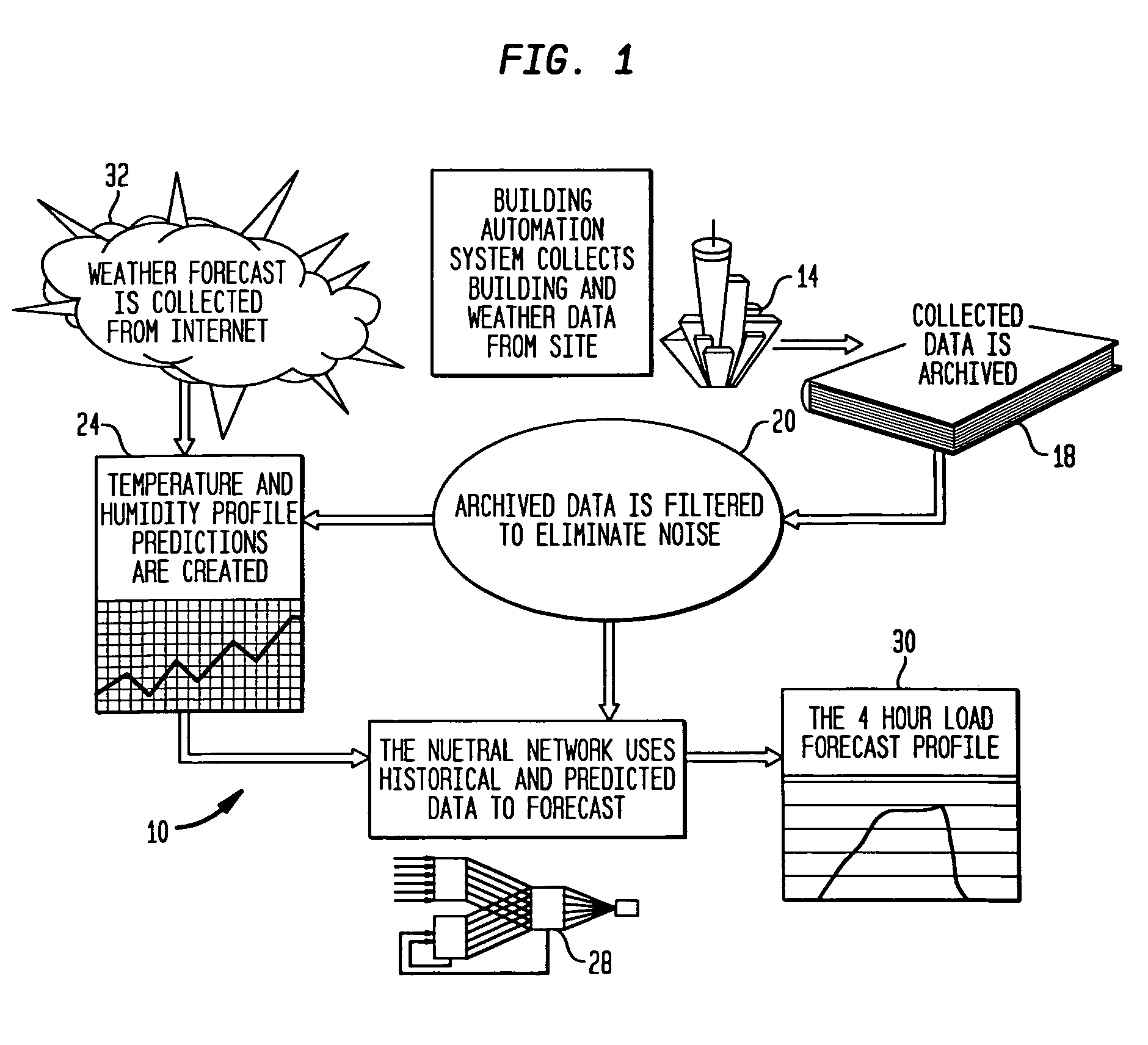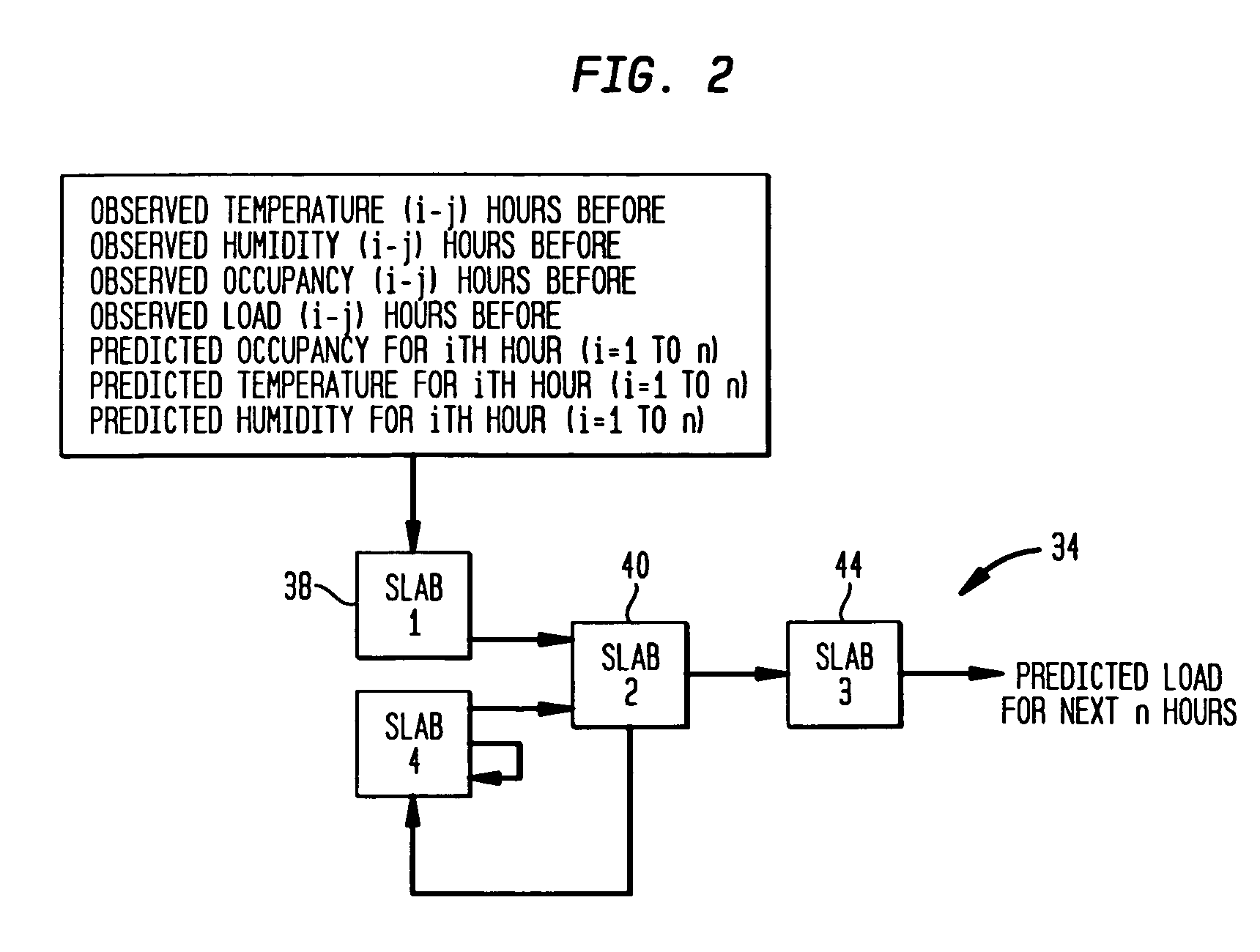System and method for predicting building thermal loads
a technology for building environmental management and system parameters, applied in the field of system for predicting thermal conditions, can solve the problems of noisy energy load data obtained from building environmental management systems and contain large spikes
- Summary
- Abstract
- Description
- Claims
- Application Information
AI Technical Summary
Benefits of technology
Problems solved by technology
Method used
Image
Examples
Embodiment Construction
[0035]A system 10 incorporating the principles of the present invention is shown in FIG. 1. System 10 forecasts thermal loads for a building. A building automation system 14 collects building and weather data at the building site and stores the data in an archive 18. A filter 20, such as a median filter, smoothes the data to reduce spikes that may have been caused by poor control strategies implemented by the building automation system 14. The filtered data is provided to a thermal condition forecaster 24 for forecasting weather conditions to be compensated by a building environmental control system and a thermal load predictor 28 for generating a predicted thermal load profile 30 for maintaining a set of environmental conditions. The thermal load profile 30 is a prediction of the thermal loads for a building as a function of time for some future interval. The thermal condition forecaster 24 also receives weather forecast data from a weather data source 32. The forecaster 24 uses a ...
PUM
 Login to View More
Login to View More Abstract
Description
Claims
Application Information
 Login to View More
Login to View More - R&D
- Intellectual Property
- Life Sciences
- Materials
- Tech Scout
- Unparalleled Data Quality
- Higher Quality Content
- 60% Fewer Hallucinations
Browse by: Latest US Patents, China's latest patents, Technical Efficacy Thesaurus, Application Domain, Technology Topic, Popular Technical Reports.
© 2025 PatSnap. All rights reserved.Legal|Privacy policy|Modern Slavery Act Transparency Statement|Sitemap|About US| Contact US: help@patsnap.com



